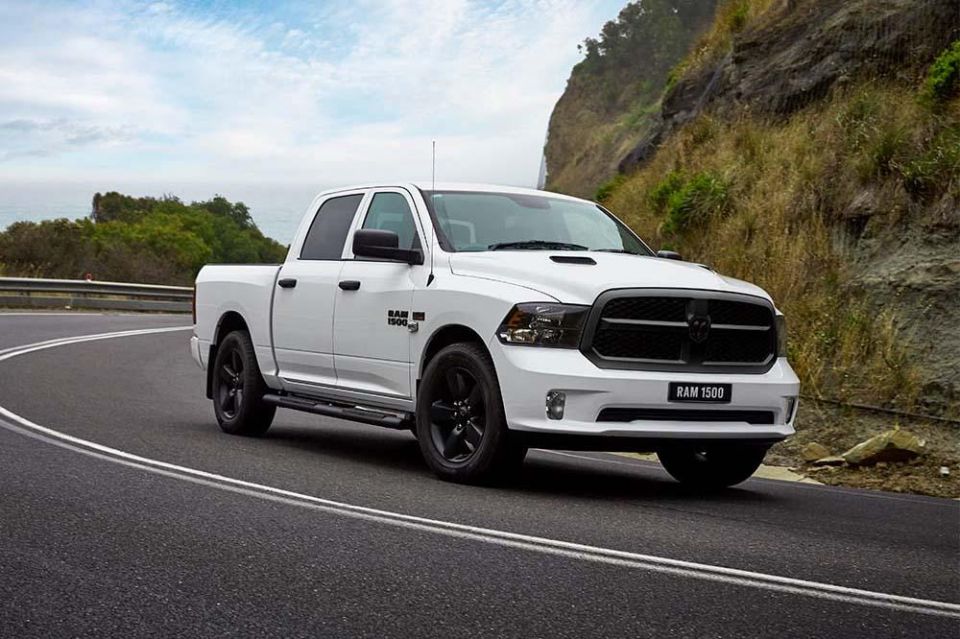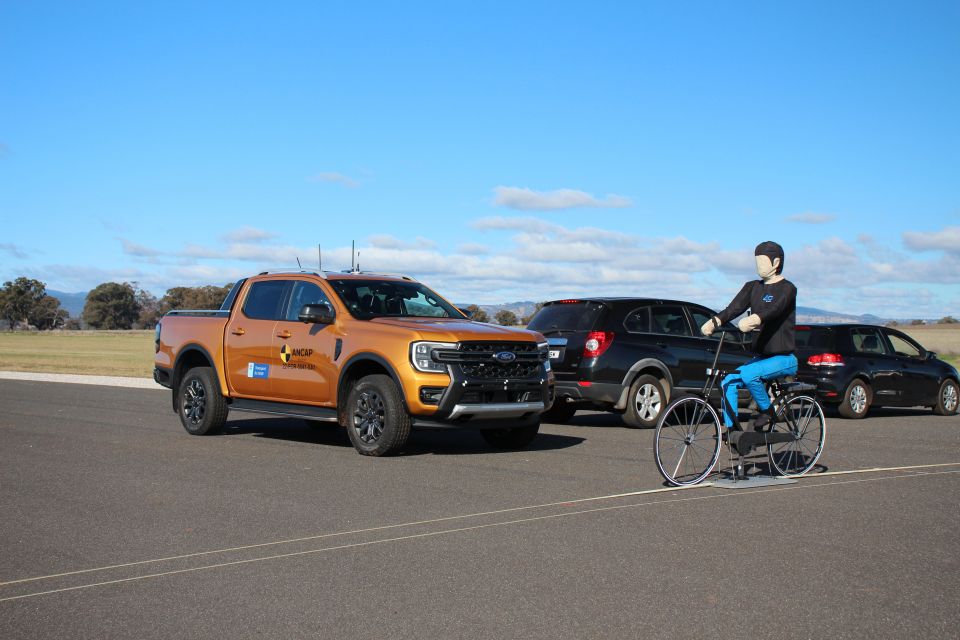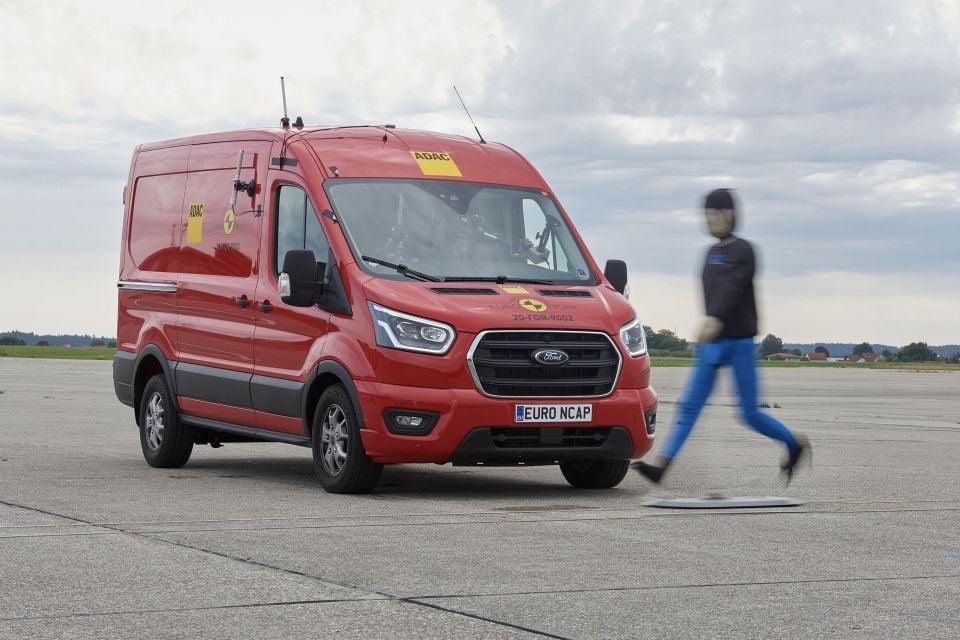

Ben Zachariah
Video: Off-road battle for Beer O’Clock Hill has automakers scrambling
7 Hours Ago
Approaching 2030, ANCAP and Euro NCAP will assess a wider range of vehicle technology and potentially test two-wheelers and heavy trucks.

News Editor


News Editor
ANCAP and its European counterpart Euro NCAP are making some key changes to the way they assess vehicle safety.
They’ve released their vision to 2030, detailing both new and expanded areas of assessment and flagging the possible expansion into assessing motorcycles, motor scooters and heavy goods vehicles – where, they note, there’s currently no consumer advocacy platform.
The two safety authorities have also flagged the desire to assess full-sized pickup trucks, citing their growing popularity and outsized dimensions, and their heretofore non-existent assessment.
ANCAP also plans more assessment of commercial vans following its 2020 testing of a range of models’ active safety technology.
ANCAP and Euro NCAP are also reconfiguring the four key areas of assessment to reflect the four distinct phases of a potential collision.

Safe Driving, Crash Avoidance, Crash Protection, and Post-Crash Safety will become the new categories from 2026, replacing the existing adult occupant protection, child occupant protection, vulnerable road user protection and safety assist categories.
ANCAP and Euro NCAP will move to a three-year cycle for updating its protocols from the current two years. The two authorities harmonised their protocols in 2018.
Passive safety tests will give greater focus to gender equality and the ageing population, while active safety tests will more closely simulate real-world environments.
They’ll also examine the impacts of human-machine interface design, and the effects of driver impairment and cognitive distraction.

As the ranks of electric vehicles continue to grow, the two safety authorities will also assess the fire risk and thermal runaway in electric vehicles.
ANCAP and Euro NCAP will also assess assisted and automated driving systems, the efficacy of vehicle-to-vehicle and vehicle-to-infrastructure technology, and cyber security and over-the-air updates.
2026 protocols will also see ANCAP introduce assessment and scoring of both public and third-party eCall systems.
It notes the expected range of performance of these emergency call systems will be determined based on the available infrastructure, and that functionality will likely be lower here than in Europe where eCall functionality is a regulatory requirement.

Despite the planned expansion of its areas of assessment, ANCAP says it will consider options to minimise required testing while maintaining the integrity of the program, acknowledging the cost of new vehicle assessment.
ANCAP is supported by 22 member organisations from around Australia and New Zealand, including our nation’s automotive clubs. It also receives funding from federal, state and territory governments.
“This is a milestone day for vehicle safety,” said ANCAP chief executive Carla Hoorweg.
“Significant safety improvements have entered the Australian, New Zealand and European vehicle markets over the past three decades as a result of ANCAP’s and Euro NCAP’s continuous drive to address the vehicle-safety-related challenges on our roads among the light vehicle fleet.

“What we’re working towards now through this future plan is to acknowledge the changing mobility landscape and the role ANCAP and Euro NCAP can play in further improving vehicle safety over the coming decade.
“The release of the 2030 future view establishes the key testing and assessment focus areas for the industry – both for our existing automotive industry stakeholders, and for a new cohort of industry stakeholders that have not previously engaged in the NCAP process.
“The move to explore assessment of medium and heavy trucks is a notable shift and seeks to address the overrepresentation of these vehicles in road fatalities and serious injuries,” Ms Hoorweg added, noting both the Australian and New Zealand governments’ goals of zero road fatalities and serious injuries by 2050.
“For our existing star rating program, the evolutionary shift in our assessment pillars acknowledges the important role assisted and automated technologies will play in reducing road-related fatalities and serious injuries among light passenger vehicles.”

“By developing timely voluntary standards for advanced safety technology, we can act as a catalyst for accelerating uptake and promoting best practice – not just for passenger cars, but also in the commercial vehicle fleet,” said Euro NCAP secretary-general Michiel van Ratingen.
Before the 2026 protocols and their new assessment categories are applicable, ANCAP will introduce tougher testing protocols from January 2023.
These include more extensive testing of autonomous emergency braking systems and how they detect pedestrians, cyclists and motorcycles and how they handle junctions, as well as the assessment of child presence detection systems, and how easy it is to escape a submerged vehicle.
You can view a full breakdown of the 2023 protocols here, while ANCAP’s guide to its 2030 vision can be viewed here.
William Stopford is an automotive journalist with a passion for mainstream cars, automotive history and overseas auto markets.


Ben Zachariah
7 Hours Ago


CarExpert.com.au
15 Hours Ago


Damion Smy
1 Day Ago


Damion Smy
1 Day Ago


Damion Smy
1 Day Ago


Damion Smy
2 Days Ago